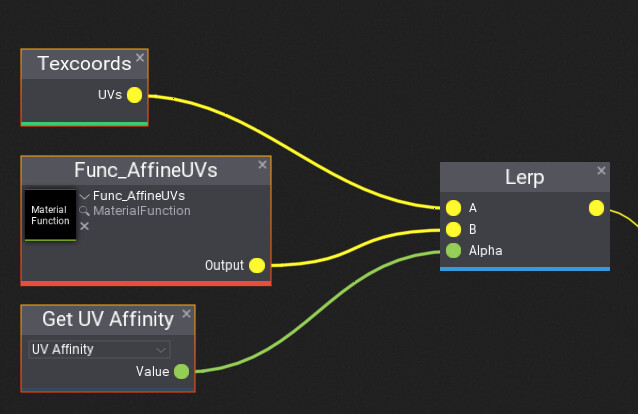Hi,
After spending a few months with Unity, I’m now considering switching to a different engine.
I tested Flax and got a positive first impression.
So far, I have only written an FPS character controller as a test.
Specific shaders are essential for my project, as they need to create a specific aesthetic.
I haven’t yet figured out how to write custom shaders. Ideally, I would like to write my own HLSL shaders with vertex and fragment stages.
Maybe someone experienced can help me understand how to achieve the following features:
- Vertex-Snapping (PSX like)
- Vertex Colors (from mesh)
- Vertex-Lighting
- Affine Texture Mapping (also PSX like)
- Scalable Pixelation¹
- PSX-like dithering and color space transformation²
- Quantized Light-/Shadowmapping³
- User-adjustable fullscreen shader (parameters like scanline-strength, etc.)
¹ Scalable Pixelation
The resolution limit is scalable and done this way in my Unity shader:
// Apply resolution limit to the base texture.
int targetResolution = (int)log2(_ResolutionLimit);
int actualResolution = (int)log2(_BaseMap_TexelSize.zw);
int lod = actualResolution - targetResolution;
half4 baseColor = SAMPLE_TEXTURE2D_LOD(_BaseMap, sampler_PointRepeat, i.uv, lod) * i.color;
I don’t know if there’s a similar LOD texture sampling system in Flax?
² PSX-like dithering and color space transformation
I won’t use dithering on single textures since my textures are already have dithering applied.
However, I’m using an user-adjustable fullscreen dithering shader:
col is the fullscreen blit, colLow is a downsampled (pixelated) version sampled with Unity’s LOD texture sampling as seen above. This results in a very nice dithering effect without calculating colors.
float3 PsxDitherFullscreen(float3 col, float3 colLow, float strength, uint2 p)
{
col *= 255.0;
colLow *= 255.0;
uint dither_u = psx_dither_table[p.x % 4][p.y % 4];
col += ((dither_u / 2.0 - 4.0) * strength);
col = lerp((uint3(col) & 0xf8), 0xf8, step(0xf8,col));
colLow = lerp((uint3(colLow) & 0xf8), 0xf8, step(0xf8,colLow));
col = lerp(col, colLow, step(0xf8, (dither_u / 15.0 * strength)));
col /= 255.0;
return col;
}
You can see my fullscreen shader in action here:
https://youtu.be/yauQqGNjKvA
For the colorspace transformation (on textures, not fullscreen) I’m using modified parts of this code:
https://github.com/Mortalitas/GShade/blob/master/ComputeShaders/PSXDither.fx
// truncate to 5bpc precision via bitwise AND operator, and limit value max to prevent wrapping.
// PS1 colors in default color mode have a maximum integer value of 248 (0xf8)
col = lerp((uint3(col) & 0xf8), 0xf8, step(0xf8,col));
// bring color back to floating point number space
col /= 255;
³ Quantized Light-/Shadowmapping
I already have shaders in Unity which support quantized mapping. It’s done using this technique:
https://www.reddit.com/r/Unity3D/comments/1gdj7ik/comment/lu4csgp/
The image of the initial reddit post shows the desired effect. This is, of course, only intended for use with fragment stage lighting, not vertex lighting. It is a nice solution to simulate baked shadows on lowres textures like some PS1 games did. Metal Gear Solid and Alien Resurrection come to my mind.
Thanks a lot for reading!



